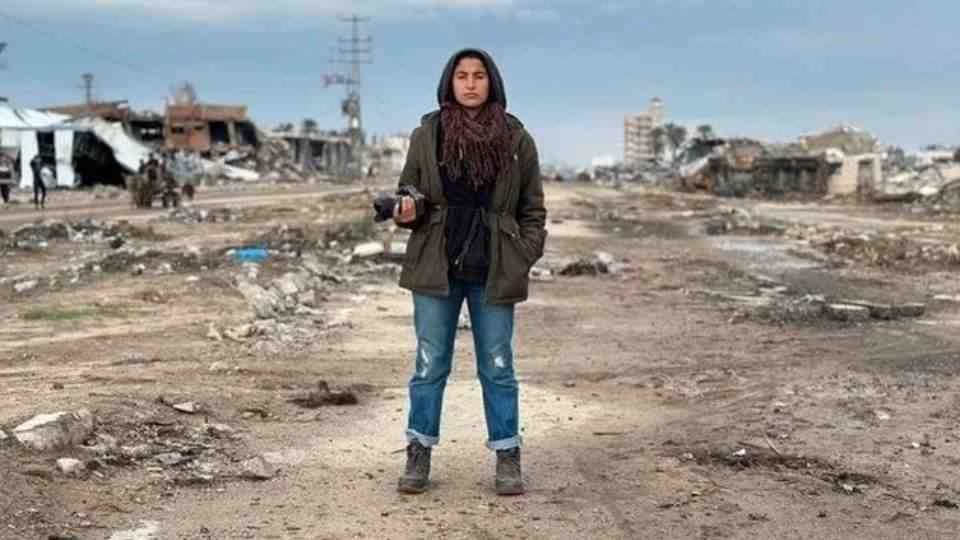In the scorched landscape of southern Gaza, where the echoes of conflict have drowned out the cries for peace for nearly two years, a fresh tragedy unfolded on August 25, 2025. Nasser Hospital in Khan Younis, one of the few remaining beacons of medical care amid Israel’s relentless military campaign, became the site of a devastating double-tap airstrike. The attack claimed the lives of at least 21 Palestinians, including five journalists who had dedicated their careers to documenting the human cost of the war. As the dust settled, a fierce dispute erupted between Hamas and the Israeli military over the true nature of the strike, with accusations of fabrication and war crimes flying amid global outrage. This incident not only highlights the perilous intersection of warfare and journalism but also underscores the broader devastation in Gaza, where civilian casualties continue to mount unchecked.
The sequence of events began abruptly on that fateful Monday morning. A Reuters live video feed, capturing the hospital’s surroundings, suddenly went dark as an Israeli missile slammed into the area. Operating the camera was Hussam al-Masri, a seasoned Palestinian cameraman whose lens had chronicled countless scenes of suffering in Gaza. Al-Masri was killed instantly in the initial blast, which targeted what Israel later described as a suspicious observation point near the hospital. Eyewitnesses described a chaotic scene: screams piercing the air as medics and bystanders rushed to aid the wounded. But relief was short-lived. Approximately 15 minutes later, a second strike hit the same location, catching rescuers and additional journalists in its deadly radius. Video footage from AlGhad TV captured the horrifying moment—civil defense workers in bright orange vests and reporters shielding their faces just seconds before the explosion engulfed them. Bodies piled atop one another, bloodied and dust-covered, in the aftermath.

Among the fallen were some of Gaza’s most dedicated voices. Mariam Abu Dagga, an Associated Press correspondent, had been reporting on the hospital’s dire conditions, including shortages of medicine and power outages that turned operating rooms into battlegrounds against death itself. In a poignant twist, she left behind a handwritten letter to her 13-year-old son, Ghaith, urging him to “make me proud” and pursue his dreams despite the surrounding horror. Ahmed Abu Aziz, affiliated with Quds Feed, had made Nasser Hospital his base, chronicling the loss of colleagues and his own home in previous strikes. He once wrote of feeling “isolated” as a journalist in Gaza, a sentiment that now resonates as a tragic epitaph. Mohammed Salam of Al Jazeera, Moaz Abu Taha, a freelance photojournalist, and al-Masri rounded out the group of media professionals killed, bringing the total number of Palestinian journalists slain since October 7, 2023, to at least 193—more than the global tally for the three years prior, according to the Committee to Protect Journalists (CPJ). The strikes also claimed the lives of medics, rescue workers, and civilians, disrupting ongoing surgeries and further crippling the hospital’s operations.
The Israeli Defense Forces (IDF) swiftly defended the operation, framing it as a precision strike against Hamas infrastructure. In a statement, the military claimed an “initial investigation” revealed the target was a surveillance camera installed by Hamas militants to monitor Israeli troop movements in the area. “In light of this, the force acted to destroy the camera,” the IDF asserted, without providing visual evidence or further details to substantiate the claim. Lt. Gen. Eyal Zamir, the IDF’s chief of staff, went further, identifying six of the deceased as “terrorists,” including one allegedly involved in the October 7, 2023, Hamas-led assault on Israel that ignited the current war. However, the military stopped short of saying these individuals were the intended targets, emphasizing instead that the operation aimed solely at neutralizing the camera. Israeli Prime Minister Benjamin Netanyahu described the civilian deaths as a “tragic mishap,” while a military spokesperson expressed regret for harm to “uninvolved personnel” and announced a preliminary probe—though critics note that such investigations rarely lead to accountability, with 88% of alleged war crimes in Gaza remaining unresolved.
Hamas, the Palestinian group governing Gaza since 2007, vehemently rejected Israel’s narrative. In a statement released on August 26 and reported by Reuters, the movement declared that “none of the 21 people killed was a member of the Palestinian movement.” They accused Israel of fabricating the story to justify the attack, pointing out discrepancies in the names provided by the IDF. At least two of the six Palestinians labeled as fighters by Israel were killed in separate incidents at different times and locations, including one in al-Mawasi, a designated “safe zone” miles away from Nasser Hospital. Hamas dismissed the claims as a “false narrative,” echoing broader accusations that Israel routinely uses alleged Hamas presence to rationalize strikes on civilian targets.
The double-tap tactic—bombing a site and then striking again once first responders arrive—has drawn sharp international condemnation, with many viewing it as a deliberate strategy to maximize casualties. UK Foreign Secretary David Lammy called the attack “horrific” and urged an immediate ceasefire to protect civilians, healthcare workers, and journalists. U.S. President Donald Trump expressed displeasure, stating he was “not happy about it,” while French President Emmanuel Macron deemed it “intolerable.” The CPJ’s regional director, Sara Qudah, demanded action, decrying the impunity enjoyed by those responsible for journalist killings. Human rights organizations, including Amnesty International and Human Rights Watch, have long accused Israel of war crimes in its Gaza operations, citing indiscriminate bombardment. A recent report revealed that 83% of fatalities in the enclave since the war’s onset have been civilians, fueling calls for independent investigations.
This strike on Nasser Hospital is not an isolated event but a grim chapter in a conflict that has ravaged Gaza since Hamas’s October 7, 2023, incursion into Israel, which killed around 1,200 people and led to the abduction of over 250 hostages. Israel’s response has resulted in over 40,000 Palestinian deaths, according to Gaza’s health ministry, with vast swaths of the territory reduced to rubble. Hospitals, once sanctuaries, have become flashpoints: Nasser itself has endured sieges, evacuations, and repeated attacks, leaving it as the sole operational public facility in southern Gaza. As the world watches, the dispute over this latest atrocity raises profound questions about accountability, the protection of journalists in war zones, and the elusive path to peace in a region scarred by endless violence.






